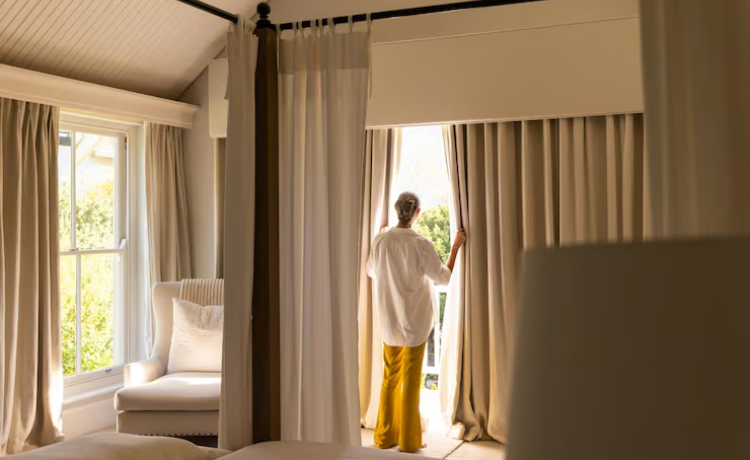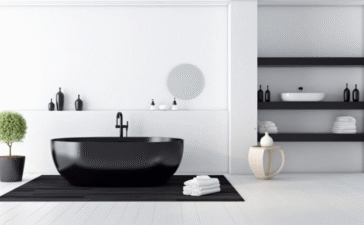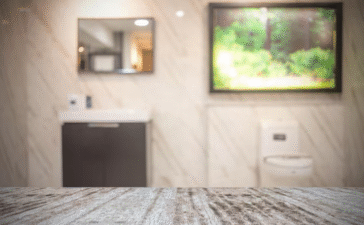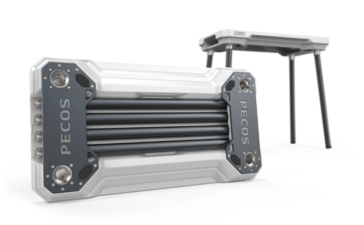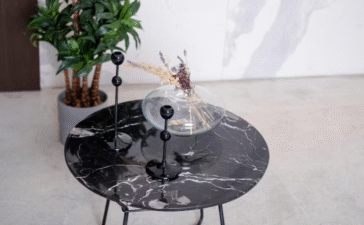Long curtains have become a cornerstone of modern interior design, offering both functional benefits and striking visual appeal. These floor-length window treatments can instantly elevate any room, creating the illusion of higher ceilings while providing superior light control and privacy. Whether you’re renovating your living room or simply refreshing your bedroom decor, understanding how to select, install, and maintain long curtains will help you make the most of this versatile design element.
The popularity of long curtains stems from their ability to create drama and sophistication in any space. Unlike standard-length curtains that end at the windowsill, long curtains draw the eye upward and create vertical lines that make rooms appear larger and more elegant. They also offer practical advantages, including better insulation, enhanced privacy, and improved light management.
This comprehensive guide will walk you through everything you need to know about long curtains, from selecting the perfect length and fabric to proper installation and maintenance. You’ll discover how different curtain styles can transform various rooms in your home and learn professional tips for achieving that designer look without breaking the budget.
What Makes Long Curtains Special?
Long curtains are defined as window treatments that extend from the curtain rod to the floor or beyond. Typically measuring 84 inches or longer, these curtains create a continuous line from ceiling to floor that dramatically enhances a room’s proportions. The most common lengths include 84″, 96″, 108″, and 120″, with custom lengths available for unique window configurations.
The aesthetic appeal of long curtains lies in their ability to create visual height and grandeur. When hung close to the ceiling rather than just above the window frame, they make ceilings appear taller and windows larger. This optical illusion works particularly well in rooms with standard 8-foot ceilings, instantly adding architectural interest and sophistication.
Long curtains also offer exceptional versatility in design applications. They work equally well in minimalist modern spaces and traditional formal rooms. The key lies in choosing the right fabric, color, and hanging style to complement your existing decor while achieving your desired level of privacy and light control.
How to Choose the Right Length for Your Curtains
Selecting the perfect curtain length requires careful consideration of your room’s proportions and design goals. Standard curtain lengths serve as starting points, but the ideal choice depends on your specific window height, ceiling height, and style preferences.
For most standard windows with 8-foot ceilings, 96-inch curtains provide the classic floor-length look when hung 4-6 inches above the window frame. However, if you have higher ceilings or prefer a more dramatic effect, 108-inch or 120-inch curtains may be more appropriate.
Custom length curtains become necessary when dealing with unusually tall windows, vaulted ceilings, or specific design requirements. While more expensive than standard sizes, custom curtains ensure a perfect fit and professional appearance. When measuring for custom curtains, always measure from your intended rod placement to your desired endpoint, adding 2-3 inches for hem adjustments.
Proper measurement is crucial for achieving the desired look. Measure from the top of your curtain rod to the floor, then decide whether you want your curtains to just touch the floor, have a slight break, or puddle dramatically. Floor-to-ceiling curtains that extend from just below the ceiling to the floor create maximum visual impact.
Curtain Fabrics for Long Curtains
The fabric you choose significantly impacts both the appearance and functionality of your long curtains. Understanding different curtain material types helps you make informed decisions based on your room’s needs and your personal style preferences.
Lightweight fabrics like linen, cotton, and sheer materials create an airy, relaxed atmosphere perfect for living rooms and casual dining areas. These breathable fabrics allow natural light to filter through while maintaining privacy. Linen curtains, in particular, have gained popularity for their natural texture and casual elegance that works well in both modern and farmhouse-style interiors.
For formal rooms or spaces requiring maximum light control, heavy fabrics such as velvet, silk, and thick polyester create luxurious, dramatic effects. These materials provide excellent insulation and sound dampening while adding rich texture and depth to your decor. Velvet curtains, especially in deep jewel tones, can transform an ordinary room into an elegant retreat.
Blackout curtains deserve special consideration for bedrooms, home theaters, and shift workers’ spaces. These specially constructed curtains feature light-blocking linings that virtually eliminate outside light infiltration. Modern blackout curtains come in attractive fabrics that don’t sacrifice style for functionality, making them ideal for maintaining both comfort and aesthetics.
Curtain Styles and Trends for Long Curtains
Contemporary curtain design offers numerous styling options for long curtains, each creating different visual effects and serving various functional purposes. Understanding these styles helps you choose options that align with your design vision and practical needs.
Floor-length curtains that just touch the floor offer a clean, tailored appearance perfect for modern and minimalist interiors. This style, sometimes called “hover curtains,” creates crisp lines without collecting dust or pet hair. The precise measurement required for this look makes it worth considering professional installation or very careful DIY measuring.
Puddled curtains, which pool 2-6 inches on the floor, create romantic, luxurious effects ideal for formal dining rooms and master bedrooms. While dramatic and elegant, puddled curtains require more maintenance and work best in low-traffic areas where the fabric won’t be disturbed frequently.
Two-tone and patterned curtains represent growing trends in window treatment design. Combining complementary colors or mixing solid and patterned panels allows for creative expression while maintaining visual balance. This approach works particularly well with long curtains, as the extended length provides ample canvas for interesting color and pattern combinations.
Current curtain color trends favor both neutral tones and bold statements. Neutral colors like warm beiges, soft grays, and cream tones provide timeless appeal and versatility, while deep blues, emerald greens, and rich burgundies create focal points and add personality to neutral room schemes.
Choosing the Right Curtain Hardware
Proper curtain hardware is essential for both the functionality and appearance of long curtains. The weight and length of these window treatments require sturdy, well-designed support systems that complement rather than detract from the overall design.
Curtain rods must be strong enough to support the additional weight of longer fabric panels. Look for rods rated for heavy-duty use, particularly if you’re choosing thick fabrics or multiple layers. Decorative rods in materials like wrought iron, brushed nickel, or oil-rubbed bronze can serve as design elements themselves, while basic utility rods work well when you want the curtains to be the focal point.
Consider motorized curtain systems for very long or heavy curtains, especially in hard-to-reach locations or for frequently adjusted window treatments. While more expensive initially, motorized systems offer convenience and can be integrated with smart home automation systems.
Curtain accessories such as tiebacks, holdbacks, and decorative hooks serve both functional and aesthetic purposes. Tiebacks allow you to pull curtains aside during the day to maximize natural light, while holdbacks mounted to the wall provide permanent options for keeping curtains open. Choose accessories that coordinate with your rod finish and overall room design.
Installing Long Curtains: Professional Tips
Proper installation makes the difference between amateur-looking window treatments and professional results. Long curtains require extra attention to measurement, support, and hanging techniques to achieve optimal appearance and function.
Begin by determining the ideal rod placement. For maximum visual impact, mount your curtain rod 4-6 inches above the window frame and extend it 3-4 inches beyond each side of the window. This positioning makes windows appear larger and allows curtains to stack back without blocking natural light when open.
The installation process requires specific tools including a level, drill, appropriate wall anchors, and measuring tape. Mark all mounting points carefully and use a level to ensure your rod will hang straight. For long, heavy curtains, consider using wall anchors rated for the combined weight of your rod and fabric.
While DIY curtain installation is possible for most homeowners, professional installation may be worthwhile for expensive custom curtains, complex window configurations, or when dealing with very heavy fabrics. Professional installers have experience with various window types and can ensure optimal results while saving you time and potential frustration.
Long Curtains for Different Room Types
Different rooms benefit from specific approaches to long curtain selection and styling. Understanding how to adapt long curtains to various spaces helps you maximize both their aesthetic and functional benefits throughout your home.
Living room curtains should balance natural light management with privacy needs while complementing your furniture and decor style. Consider the room’s primary functions and choose fabrics that support these activities. Lighter fabrics work well for rooms used primarily during daytime, while heavier materials suit spaces used for evening entertainment or TV viewing.
Bedroom curtains prioritize privacy and light control, making them ideal candidates for blackout or room-darkening fabrics. The longer length of floor-to-ceiling curtains provides additional light-blocking coverage around window edges. Layer sheer panels behind heavier curtains for daytime privacy with natural light filtering.
Home office curtains need to minimize glare on computer screens while maintaining adequate natural light for general tasks. Consider curtains with light-filtering properties that reduce harsh sunlight without completely darkening the space. The professional appearance of well-hung long curtains also enhances video conference backgrounds.
Media room curtains should maximize light control for optimal viewing experiences. Heavy, dark-colored fabrics in long lengths help create theater-like environments by blocking external light sources that could interfere with screen visibility.
Benefits of Long Curtains
Long curtains offer numerous advantages beyond their aesthetic appeal, making them practical investments in home comfort and efficiency. Understanding these benefits helps justify the additional cost compared to standard-length alternatives.
Superior light control represents one of the most significant advantages of long curtains. The extended coverage eliminates light gaps at the bottom of windows, providing better room darkening for sleep quality and media viewing. This comprehensive coverage also reduces glare and harsh sunlight that can fade furniture and flooring.
Energy efficiency improvements result from long curtains’ enhanced insulating properties. The additional fabric creates better thermal barriers, reducing heat loss during winter months and keeping rooms cooler during summer. This improved insulation can lead to measurable reductions in heating and cooling costs, particularly in rooms with large windows.
Long curtains made from quality fabrics typically offer greater durability and longevity than shorter alternatives. The investment in better materials and construction pays dividends through years of reliable service. High-quality long curtains can withstand regular use, cleaning, and seasonal changes while maintaining their appearance and function.
Enhanced privacy protection comes from the comprehensive window coverage that long curtains provide. Unlike shorter curtains that may leave gaps, floor-length panels ensure complete privacy while still allowing you to control the amount of natural light entering your space.
Maintenance and Care for Long Curtains
Proper maintenance extends the life and appearance of your long curtains while protecting your investment. Different fabrics require specific care approaches, but following general guidelines helps preserve both beauty and function.
Regular vacuuming with upholstery attachments removes dust and allergens that accumulate in curtain fabrics. Focus on pleats, folds, and the bottom edges where dust tends to collect. This simple maintenance step prevents buildup that can cause fabrics to look dingy or trigger allergies.
Washing and dry cleaning requirements vary by fabric type and construction. Always check manufacturer care labels before attempting any cleaning. Cotton and linen curtains often tolerate machine washing on gentle cycles, while silk, velvet, and lined curtains typically require professional dry cleaning to prevent damage or shrinkage.
When storing long curtains seasonally or during renovations, proper folding and storage prevent wrinkles and fabric damage. Clean curtains thoroughly before storage, then fold carefully along natural lines or roll around large tubes to minimize creasing. Store in breathable containers or garment bags in cool, dry locations away from direct sunlight.
Professional cleaning services specialize in curtain care and can handle delicate fabrics, remove stubborn stains, and restore proper draping. Consider annual professional cleaning for expensive or delicate curtains, or whenever home cleaning methods prove insufficient.
Where to Buy Long Curtains
Finding quality long curtains requires knowing where to shop and what to look for in terms of construction, fabric quality, and value. Various retailers offer different advantages depending on your needs, budget, and timeline.
Established home decor retailers like Pottery Barn, Crate & Barrel, and West Elm offer curated selections of stylish long curtains with consistent quality standards. These retailers often provide detailed product information, customer reviews, and return policies that support confident purchasing decisions.
Online retailers including Amazon, Wayfair, and Overstock.com offer extensive selections with competitive pricing and customer reviews. However, purchasing curtains online requires careful attention to measurements, fabric descriptions, and return policies since you cannot physically examine the products before buying.
Custom curtain specialists and local workrooms provide personalized service and made-to-measure options for unique windows or specific design requirements. While more expensive than ready-made alternatives, custom curtains ensure perfect fit and exclusive fabric choices.
Department stores like Target, IKEA, and HomeGoods offer budget-friendly options for long curtains, though selection and quality may be more limited. These retailers work well for temporary solutions or when working with tight budgets.
Frequently Asked Questions
What length curtains do I need for 8-foot ceilings?
For standard 8-foot ceilings, 96-inch curtains typically provide the ideal floor-length appearance when hung 4-6 inches above the window frame. However, measure from your intended rod placement to the floor to ensure proper fit, as ceiling height can vary slightly even in standard construction.
Can I use long curtains in small rooms?
Long curtains actually benefit small rooms by creating vertical lines that make spaces appear larger and ceilings higher. Choose lighter colors and fabrics to avoid overwhelming the space, and ensure curtains can stack back completely to maximize natural light when open.
How do I prevent long curtains from dragging on the floor?
Proper measurement is key to achieving the right length. Curtains should either just touch the floor or have a slight break (1-2 inches). If your curtains are too long, professional hemming can adjust the length. Avoid letting curtains drag significantly, as this causes wear and collects dirt.
What’s the difference between blackout and room-darkening curtains?
Blackout curtains block virtually all light (99% or more) using special lining or weaving techniques, while room-darkening curtains reduce light significantly but don’t eliminate it completely. Choose blackout for bedrooms or media rooms where complete darkness is desired, and room-darkening for spaces where some filtered light is acceptable.
How wide should long curtains be?
Curtain width should be 1.5 to 3 times the window width for proper fullness. Wider multiples create more luxurious gathering, while narrower multiples offer a more tailored appearance. Consider your fabric weight and desired look when determining width.
Do long curtains make rooms look bigger?
Yes, long curtains create vertical lines that draw the eye upward, making both windows and rooms appear larger. Hanging curtains close to the ceiling and extending the rod beyond the window frame maximizes this effect.
How often should I clean long curtains?
Vacuum long curtains monthly to remove dust and allergens. Professional cleaning or washing frequency depends on the fabric and room usage, but generally every 6-12 months is sufficient for most applications. High-traffic areas or homes with pets may require more frequent cleaning.
Can I install long curtains myself?
DIY installation is possible with proper tools and careful measurement. However, the length and weight of long curtains require sturdy mounting hardware and precise rod placement. Consider professional installation for expensive custom curtains or challenging window configurations.
What’s the best fabric for long curtains in humid areas?
Synthetic fabrics like polyester blends resist moisture and mold better than natural fibers in humid environments. Look for fabrics specifically treated for moisture resistance, and ensure proper ventilation around windows to prevent condensation buildup.
How do I choose curtain colors that won’t go out of style?
Neutral colors like cream, soft gray, and warm beige offer timeless appeal and versatility. These colors complement changing decor styles and seasonal accessories. If you prefer bold colors, consider using them as accent panels or in rooms where you don’t mind updating more frequently.
You would also like: “Christmas Shower Curtain“
Elevate Your Home with the Perfect Long Curtains
Long curtains represent one of the most impactful yet accessible ways to transform your living spaces. From creating the illusion of height in modest rooms to providing superior light control and privacy, these versatile window treatments offer both immediate visual benefits and long-term practical advantages.
The investment in quality long curtains pays dividends through improved energy efficiency, enhanced comfort, and timeless style that adapts to changing decor trends. Whether you choose ready-made panels from your favorite retailer or invest in custom creations, the key lies in careful selection of length, fabric, and hardware that align with your specific needs and aesthetic vision.
Start by evaluating one room in your home where long curtains could make the biggest impact. Measure carefully, consider your lifestyle needs, and don’t hesitate to seek professional advice for challenging installations or expensive custom options. Your patience in selecting the right long curtains will reward you with years of enhanced comfort and style in your beautifully appointed home.
